Abstract
Many children with autism cannot effectively ask wh— questions to mand for information, even though they may have extensive tact, intraverbal, and receptive language skills. Wh— questions are typically mands because they occur under the control of establishing operations (EOs) and result in specific reinforcement. The current study first investigated a procedure to teach the mand “where?” to children with autism by contriving an EO for the location of a missing item. Following the successful acquisition of this mand, an establishing operation for a specific person was contrived to teach the mand “who?” The results showed that the children acquired these mands when the relevant establishing operations were manipulated as independent variables. The children also demonstrated generalization to untrained items and to the natural environment. These results have implications for methods of language instruction for children who have difficulty acquiring mands for information.
Full text
PDF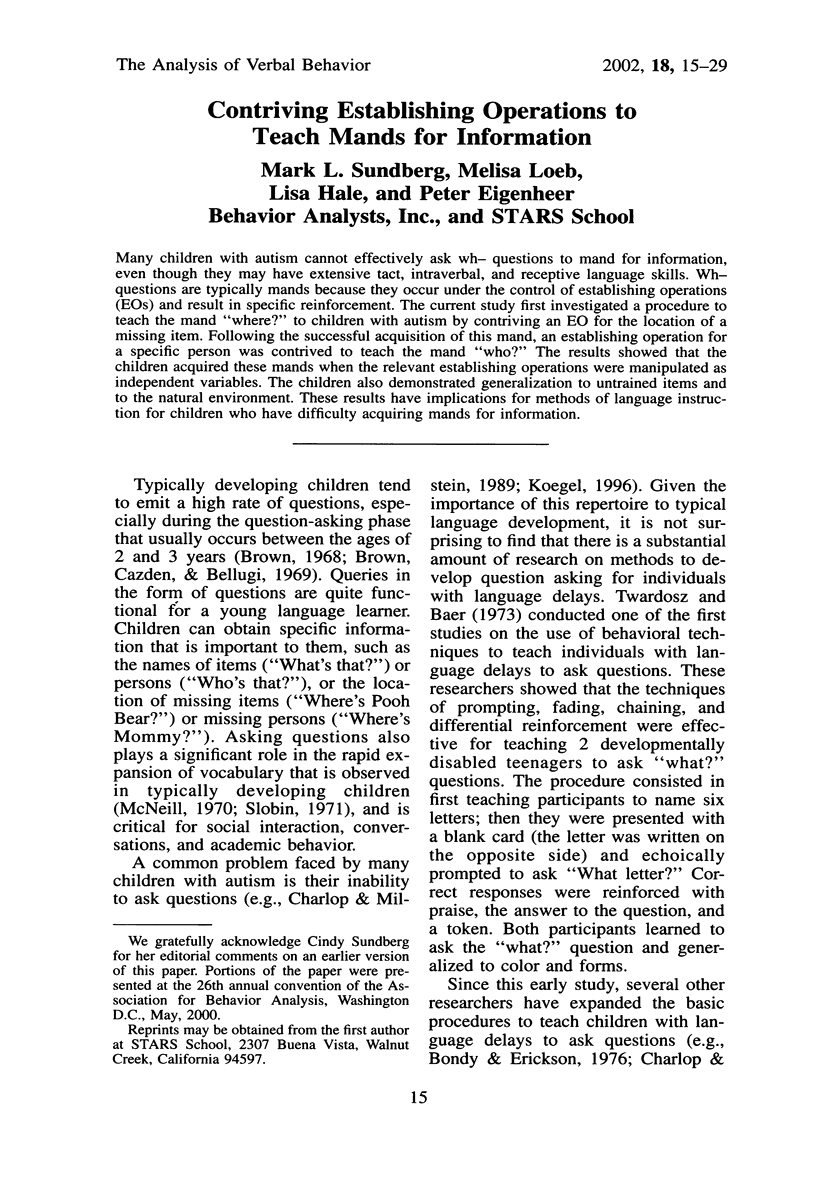
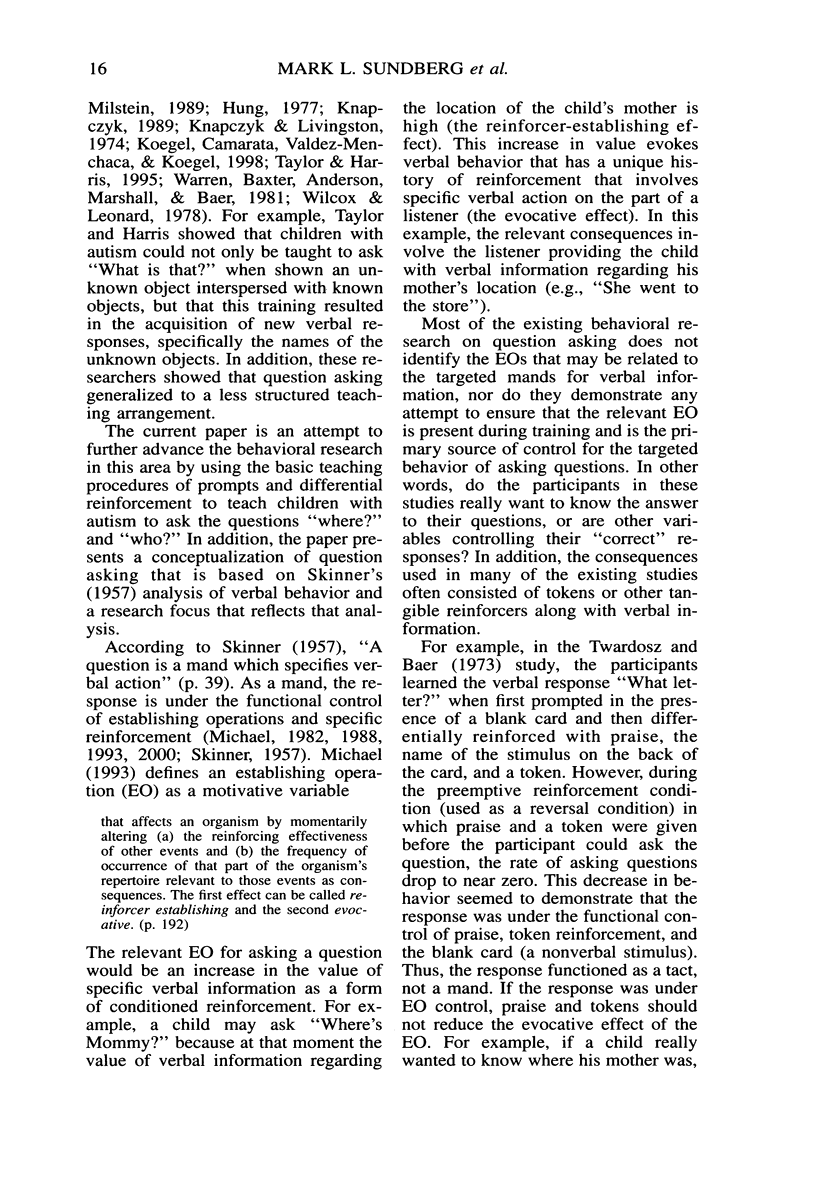
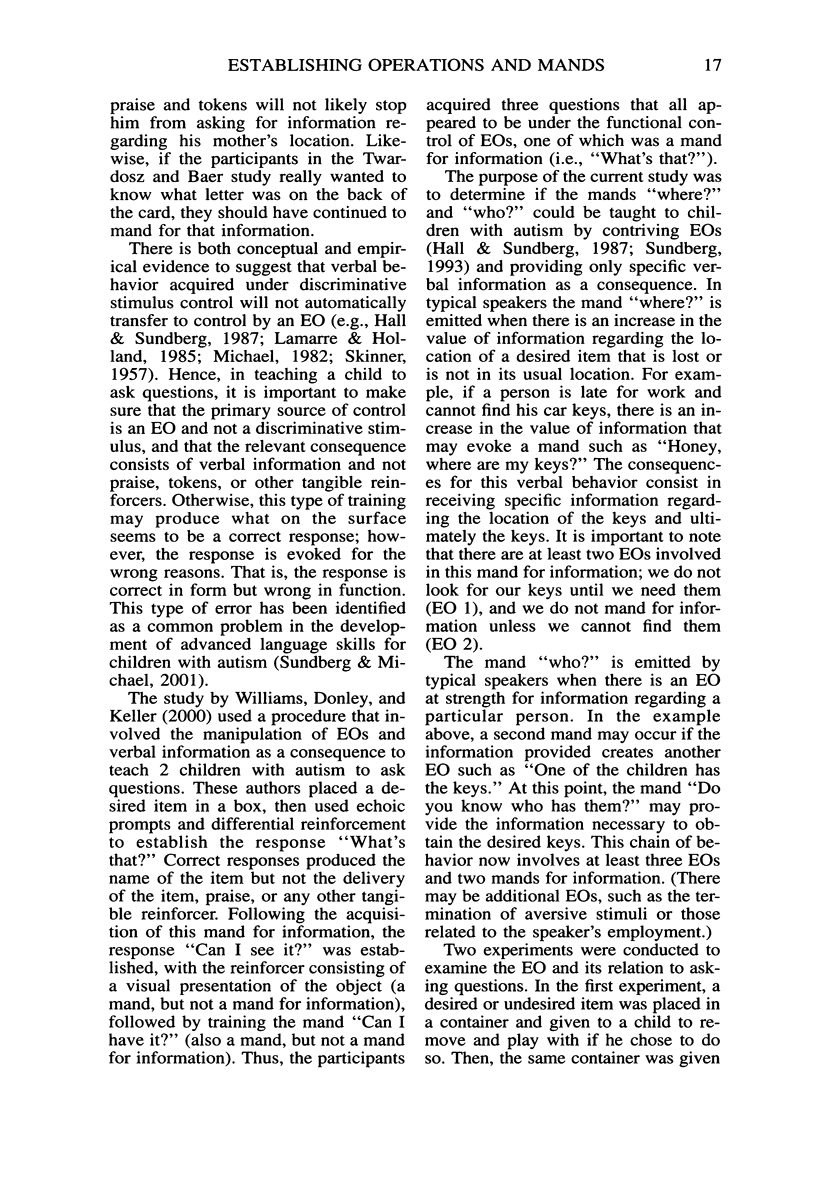
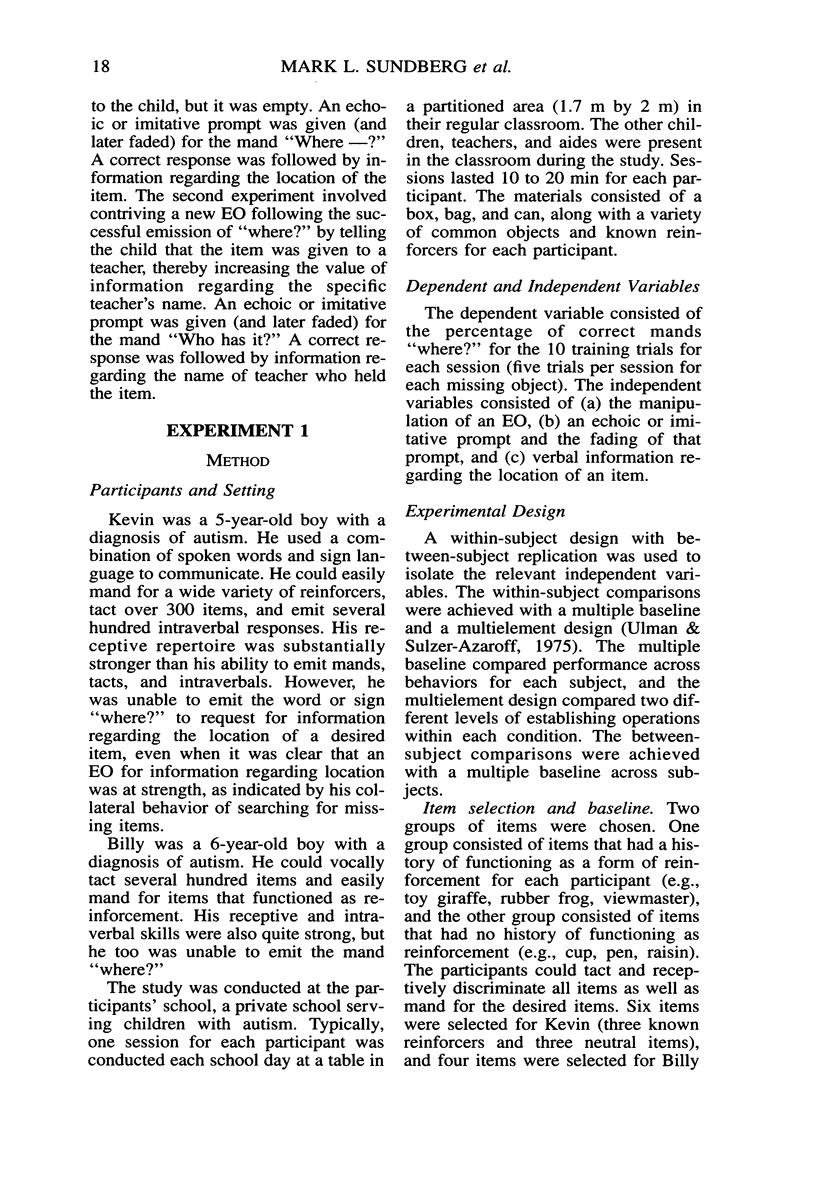
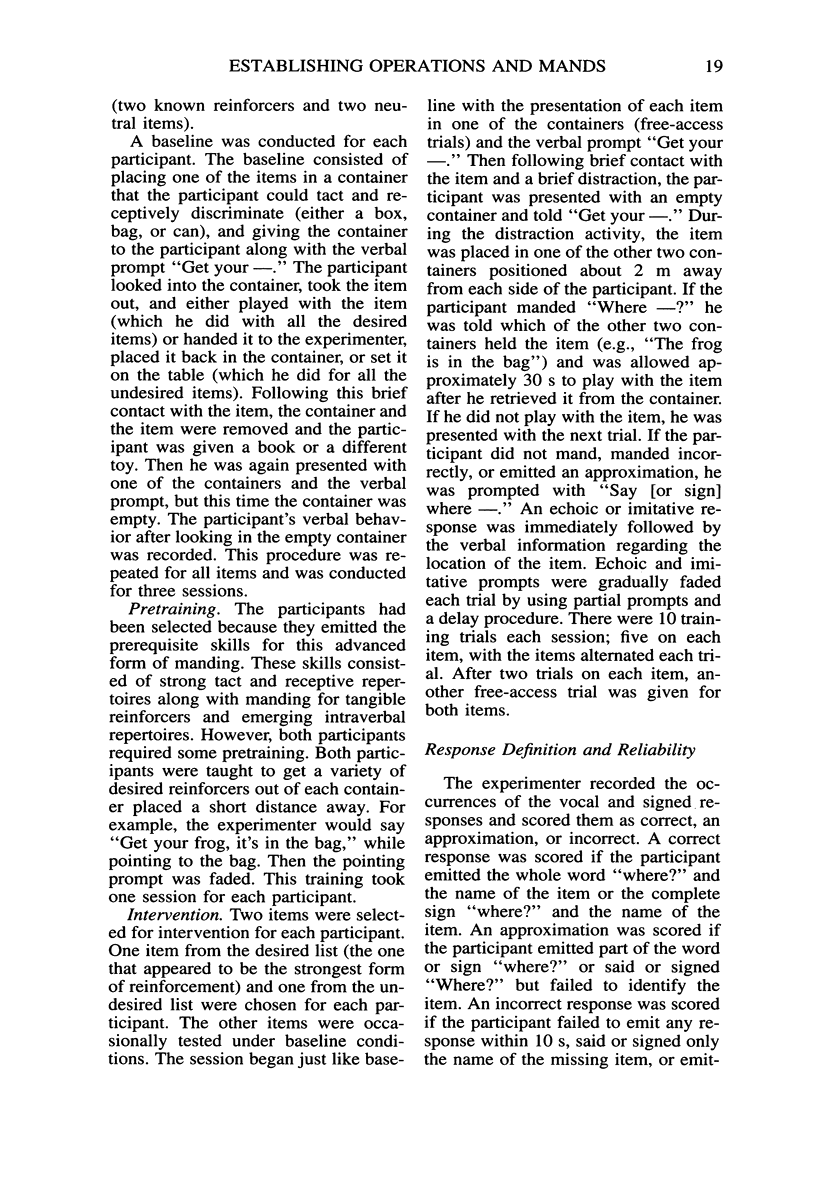

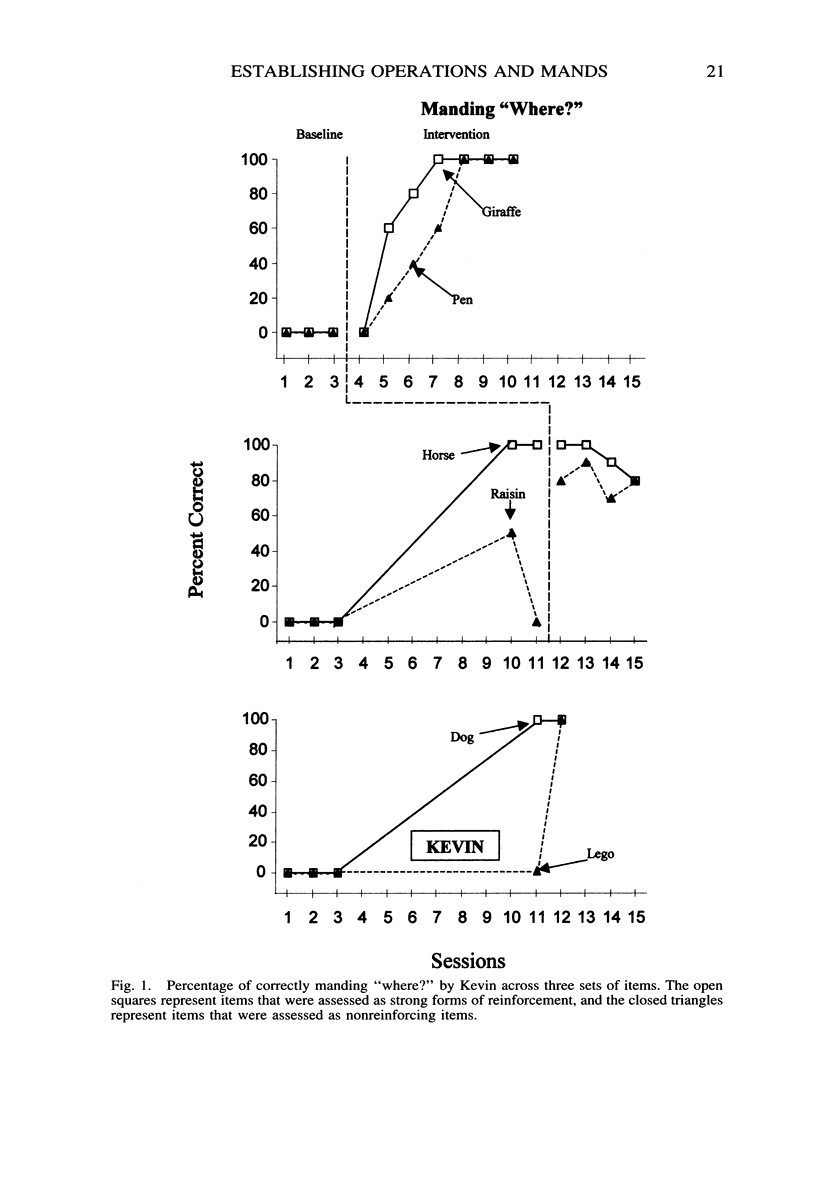
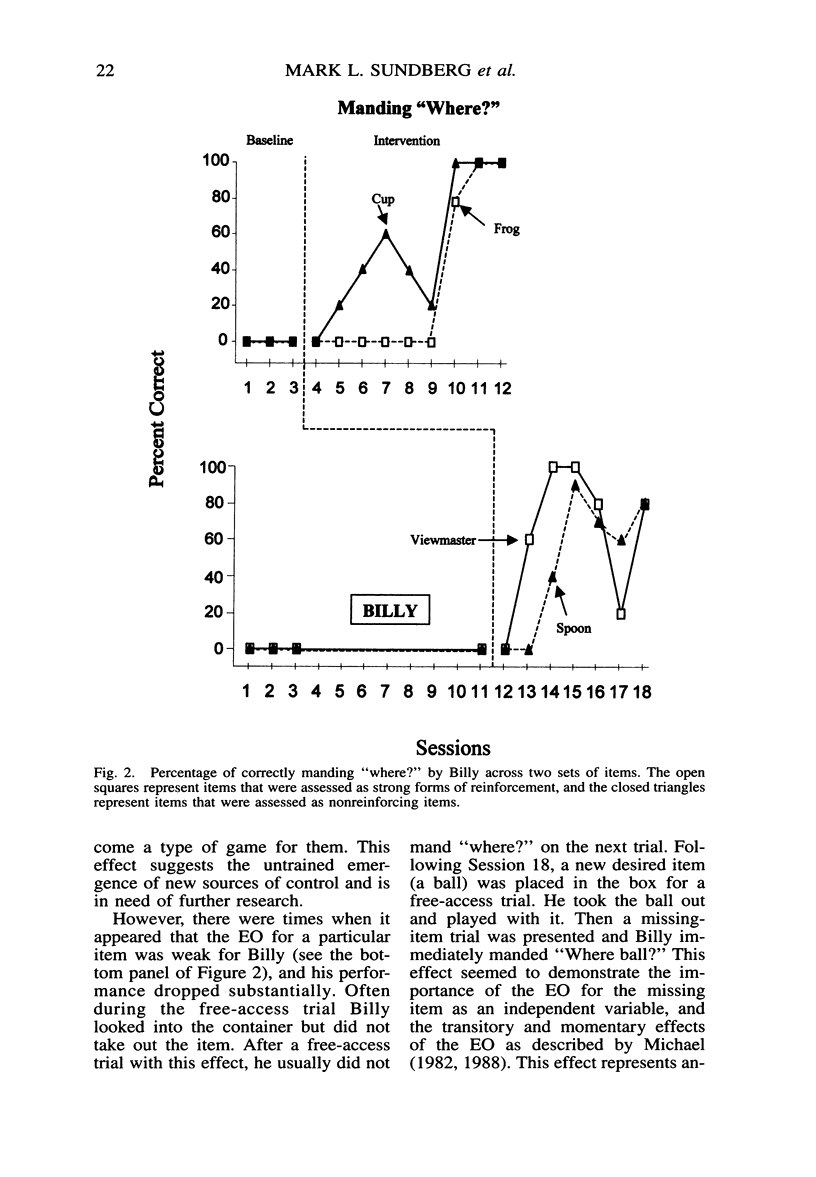
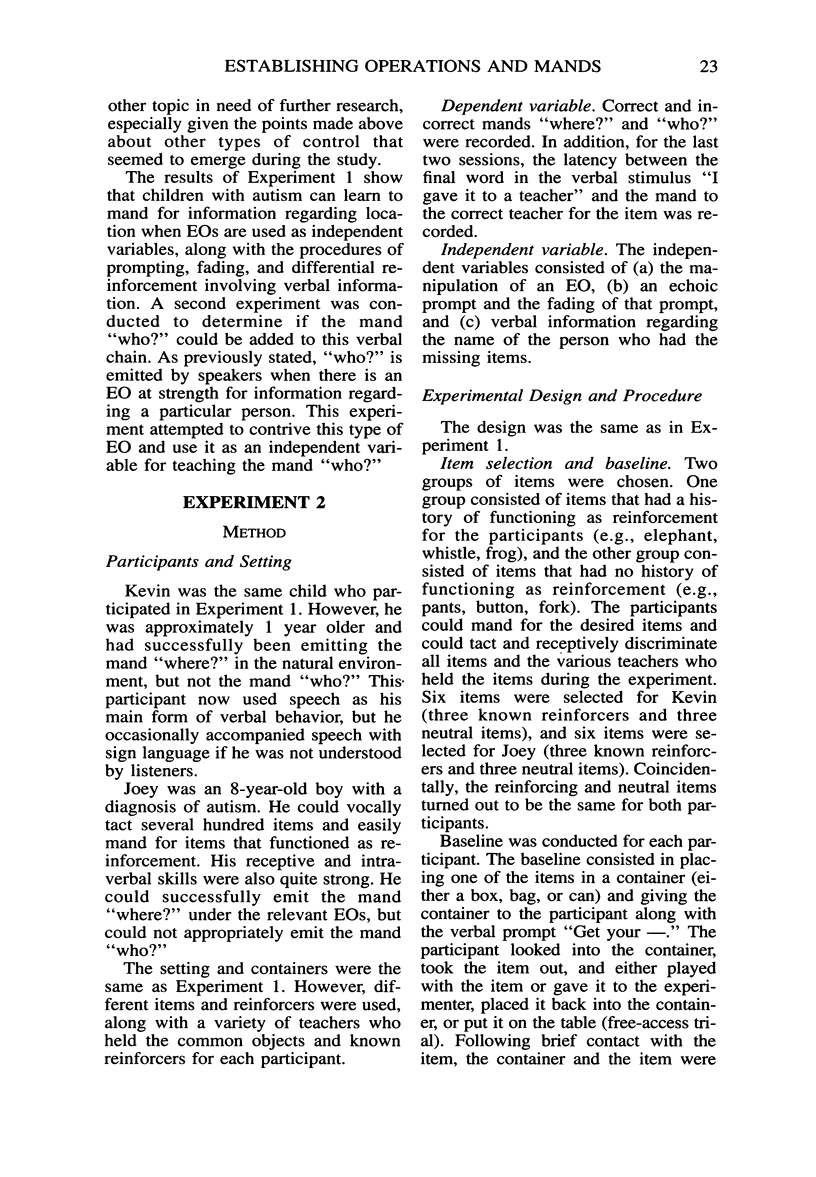

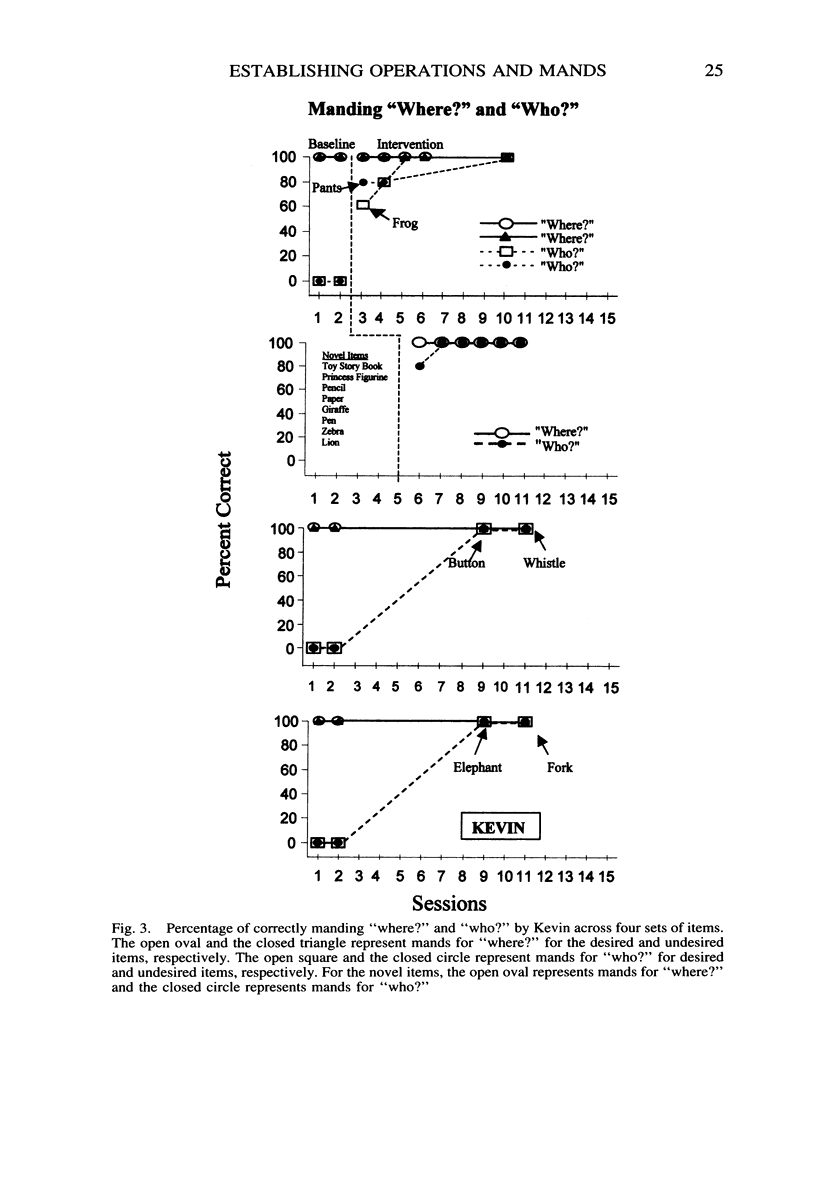
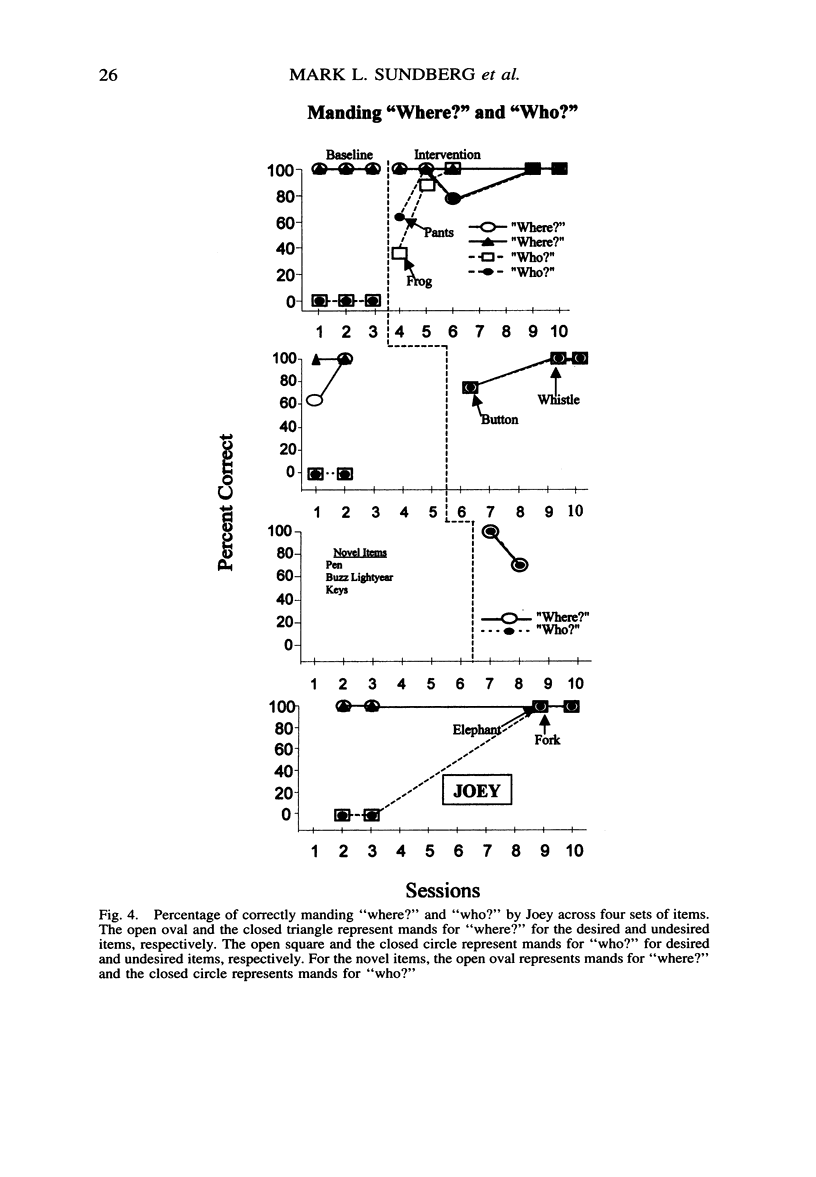

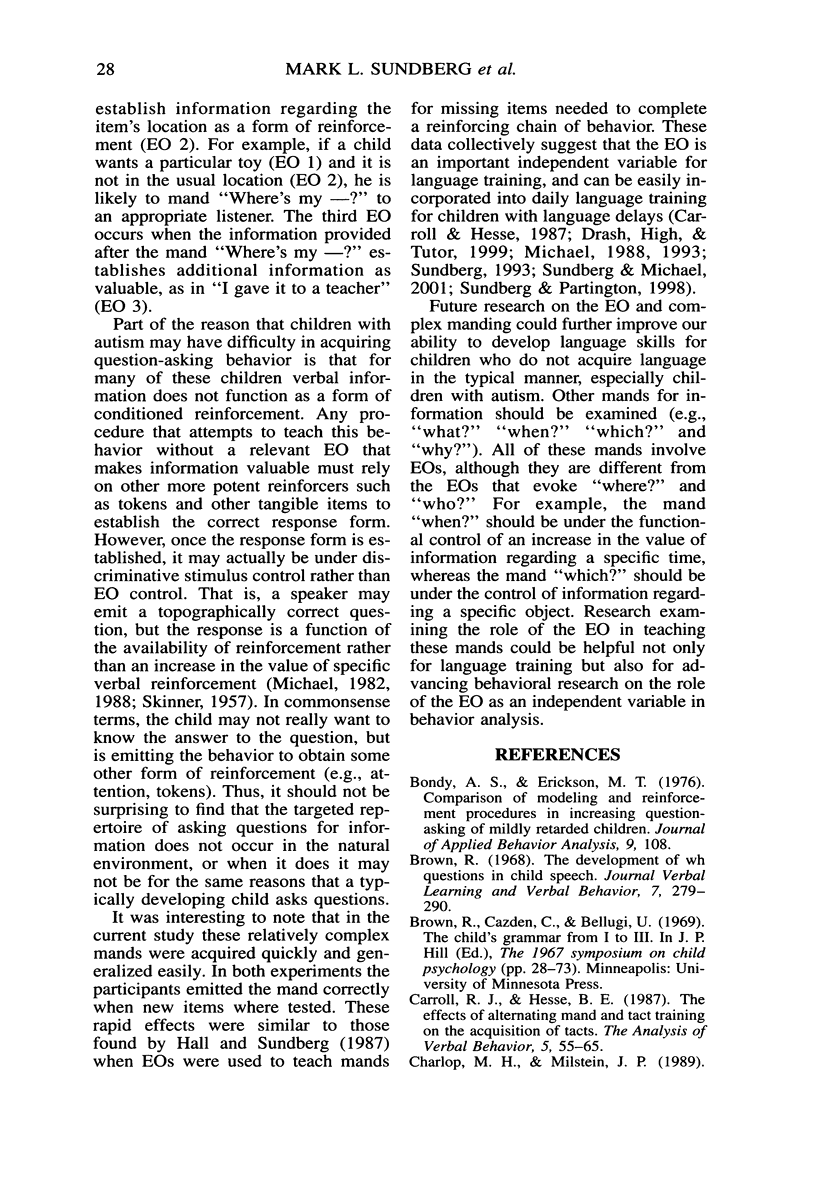
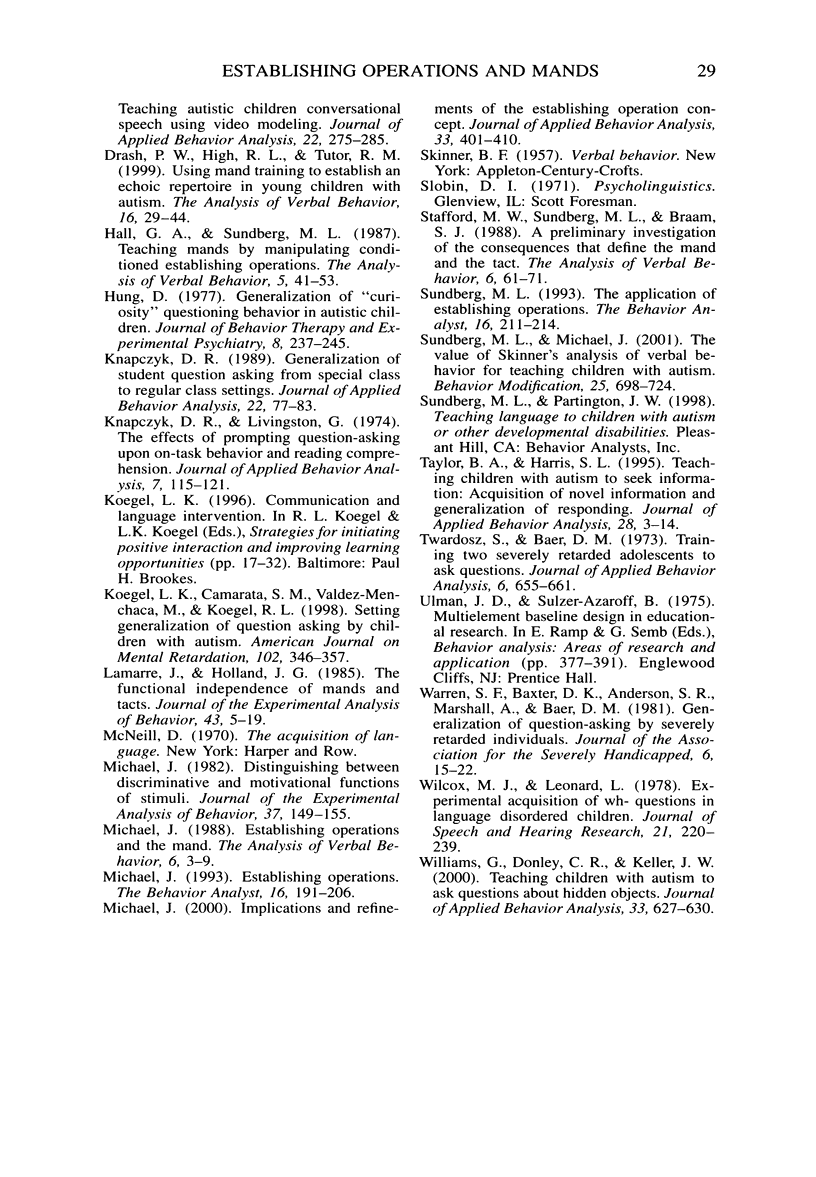
Selected References
These references are in PubMed. This may not be the complete list of references from this article.
- Bondy A. S., Erickson M. T. Comparison of modelling and reinforcement procedures in increasing question-asking of mildly retarded children. J Appl Behav Anal. 1976 Spring;9(1):108–108. doi: 10.1901/jaba.1976.9-108. [DOI] [PMC free article] [PubMed] [Google Scholar]
- Charlop M. H., Milstein J. P. Teaching autistic children conversational speech using video modeling. J Appl Behav Anal. 1989 Fall;22(3):275–285. doi: 10.1901/jaba.1989.22-275. [DOI] [PMC free article] [PubMed] [Google Scholar]
- Knapczyk D. R. Generalization of student question asking from special class to regular class settings. J Appl Behav Anal. 1989 Spring;22(1):77–83. doi: 10.1901/jaba.1989.22-77. [DOI] [PMC free article] [PubMed] [Google Scholar]
- Knapczyk D. R., Livingston G. The effects of prompting question-asking upon on-task behavior and reading comprehension. J Appl Behav Anal. 1974 Spring;7(1):115–121. doi: 10.1901/jaba.1974.7-115. [DOI] [PMC free article] [PubMed] [Google Scholar]
- Koegel L. K., Camarata S. M., Valdez-Menchaca M., Koegel R. L. Setting generalization of question-asking by children with autism. Am J Ment Retard. 1998 Jan;102(4):346–357. doi: 10.1352/0895-8017(1998)102<0346:sgoqbc>2.0.co;2. [DOI] [PubMed] [Google Scholar]
- Lamarre J., Holland J. G. The functional independence of mands and tacts. J Exp Anal Behav. 1985 Jan;43(1):5–19. doi: 10.1901/jeab.1985.43-5. [DOI] [PMC free article] [PubMed] [Google Scholar]
- Michael J. Distinguishing between discriminative and motivational functions of stimuli. J Exp Anal Behav. 1982 Jan;37(1):149–155. doi: 10.1901/jeab.1982.37-149. [DOI] [PMC free article] [PubMed] [Google Scholar]
- Michael J. Establishing operations. Behav Anal. 1993 Fall;16(2):191–206. doi: 10.1007/BF03392623. [DOI] [PMC free article] [PubMed] [Google Scholar]
- Michael J. Implications and refinements of the establishing operation concept. J Appl Behav Anal. 2000 Winter;33(4):401–410. doi: 10.1901/jaba.2000.33-401. [DOI] [PMC free article] [PubMed] [Google Scholar]
- Sundberg M. L., Michael J. The benefits of Skinner's analysis of verbal behavior for children with autism. Behav Modif. 2001 Oct;25(5):698–724. doi: 10.1177/0145445501255003. [DOI] [PubMed] [Google Scholar]
- Sundberg M. L. The application of establishing operations. Behav Anal. 1993 Fall;16(2):211–214. doi: 10.1007/BF03392625. [DOI] [PMC free article] [PubMed] [Google Scholar]
- Taylor B. A., Harris S. L. Teaching children with autism to seek information: acquisition of novel information and generalization of responding. J Appl Behav Anal. 1995 Spring;28(1):3–14. doi: 10.1901/jaba.1995.28-3. [DOI] [PMC free article] [PubMed] [Google Scholar]
- Twardosz S., Baer D. M. Training two severely retarded adolescents to ask questions. J Appl Behav Anal. 1973 Winter;6(4):655–661. doi: 10.1901/jaba.1973.6-655. [DOI] [PMC free article] [PubMed] [Google Scholar]
- Wilcox M. J., Leonard L. B. Experimental acquisition of wh-questions in language-disordered children. J Speech Hear Res. 1978 Jun;21(2):220–239. doi: 10.1044/jshr.2102.220. [DOI] [PubMed] [Google Scholar]
- Williams G., Donley C. R., Keller J. W. Teaching children with autism to ask questions about hidden objects. J Appl Behav Anal. 2000 Winter;33(4):627–630. doi: 10.1901/jaba.2000.33-627. [DOI] [PMC free article] [PubMed] [Google Scholar]


